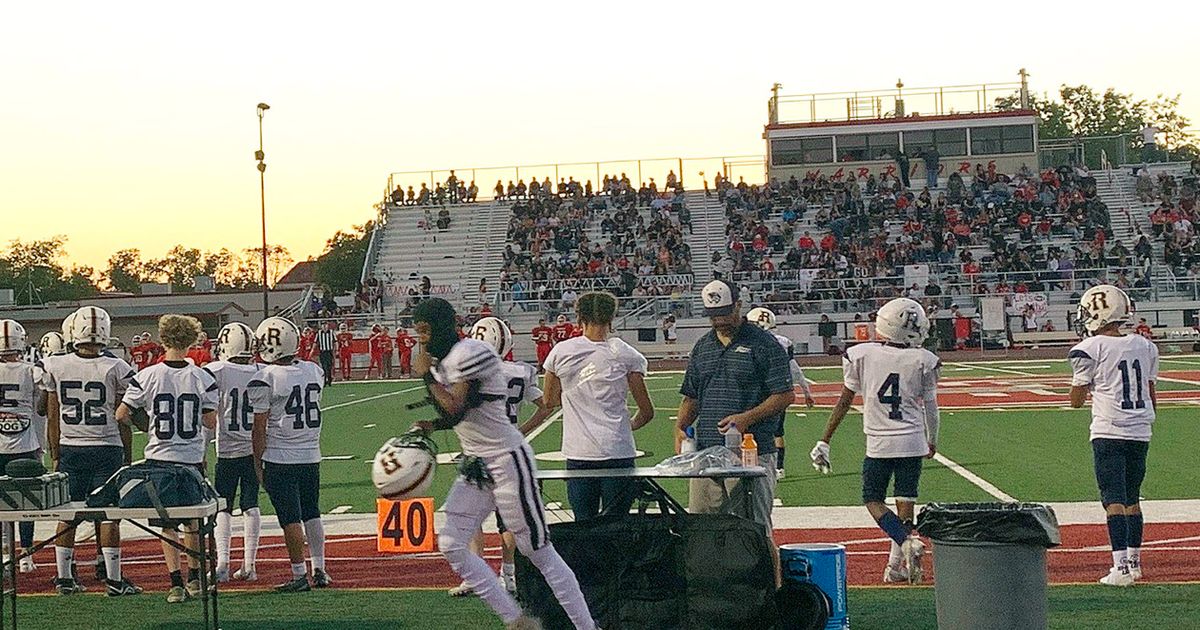
Superintendent Torie Gibson felt she had no choice but to make the unpopular decision. When learning Amador High’s football team had a group chat titled, “Kill the Blacks,” filled with derogatory language and racial slurs, she ended the Northern California school’s varsity season.
That meant the 100-year anniversary game between rivals Amador and Argonaut was called off.
“We canceled the football season, and we did it for all the right reasons because the behavior is not acceptable,” said Gibson, who oversees the Amador County Unified School District. “However, football is an extracurricular activity. It is not a given. It is not a right. It is strictly extra.”
The discipline was swift and abrupt. Moments before Amador was to play Rosemont — a predominantly Black and Latino school in nearby Sacramento — the game was called off.
There was more fallout. Amador’s football coach, athletic director and principal were put on leave.
In Gibson’s mind, the discipline was the easy part. The hard part will be setting the table for real change, and the key will be presentation. The school is based in a mostly white, rural area an hour’s drive east of Sacramento. Amador has just four Black students out of about 750.
“I think if we roll it out correctly and we provide the necessary support and we don’t shame people for who they are and we work it out so that we celebrate everyone, but really, truly look at our blind spots and our differences, I think it’ll make a big difference,” said Gibson, who is white.
The incident at Amador was one of several alarming examples of racism against Black people that occurred this fall in high school football around the nation. Athletes in the past were able to leave racism and other issues off the field, but today not even sports settings are immune from real world problems.
Administrators in some cases have used these incidents to start conversations about race that have been hard for them to bring up before and roll out programs they hope will have lasting impact.
A TikTok video created by players at River Valley High School in Yuba City, California, featured a mock slave auction. A social media post circulated showing five white males from West Laurens High School, a central Georgia school a little more than a two-hour drive southeast of Atlanta, at a football game wearing shirts that spelled out a racial slur targeting Black people. And at Guilderland High School in New York, about a half-hour’s drive west of Albany, several classmates showed up to a football game wearing black facepaint, prompting about 100 students to walk out of classes days later.
Richard Lapchick, the founder of The Institute for Diversity and Ethics in Sport at Central Florida, is using social media to draw attention to weekly examples of racism in sports and elsewhere. He said the institute, also known as TIDES, found 58 articles in its first week of searching, and he highlighted 11 on his Twitter feed.
“White supremacist acts have been unleashed across the nation in the current political climate,” Lapchick said. “I don’t think the general public knows how extensive it is.”
Gibson, the superintendent in Northern California, feels she has to start with implicit bias work in her district. She said she was encouraged by the fact that the school already has strong transgender and gay and lesbian advocacy groups.
“I think we are going to have a great opportunity to really make some change and to do some great work,” she said.
The mock slave auction at River Valley was done as a prank, but there was nothing funny about the repercussions. The varsity football team forfeited the remainder of its season after suspensions left it with too few players to continue.
The Greater Sacramento NAACP chapter hosted a meeting calling for systemic change and players apologized for their involvement. During the meeting, a Black player said he did not want to participate in the mock slave auction, but he was the only Black player left in the locker room and everyone focused on him. He said he tried to leave, but could not. He was told the video would not be published, but it was.
River Valley Principal Lee McPeak said the district is working with a professional to implement programs to help learn from the incident.
“There are vital messages about race, discrimination and systemic changes that are necessary to help us turn important corners toward equity, respect and compassion, critical for our schools today,” he said.
At Guilderland High in New York, some students were outraged when some of their classmates showed up to a game in blackface. Administrators met with students through small group, roundtable discussions. The school said it was a “culminating moment” for students who had experienced discriminatory issues and injustices.
In the wake of all the incidents, the work toward learning and changing is just starting.
“It’s going to take us time,” Gibson said. “It’s going to be years of work. There’s no magic button to just fix it.”
___
Follow Cliff Brunt on Twitter: twitter.com/CliffBruntAP